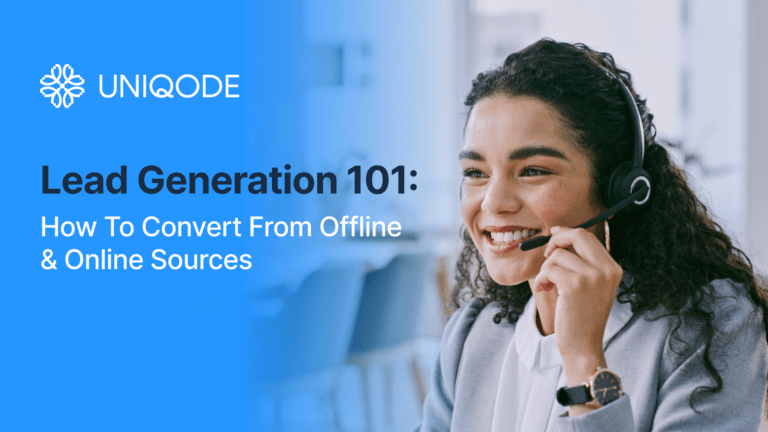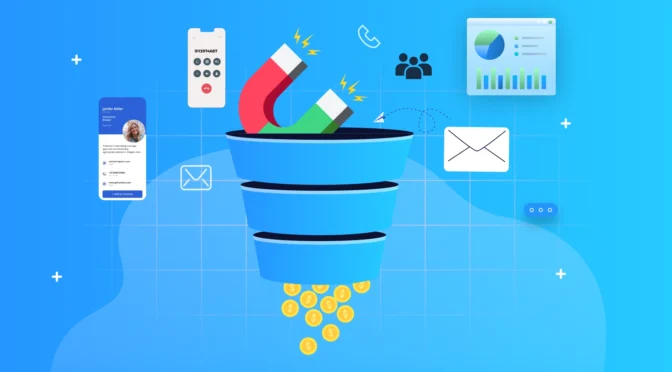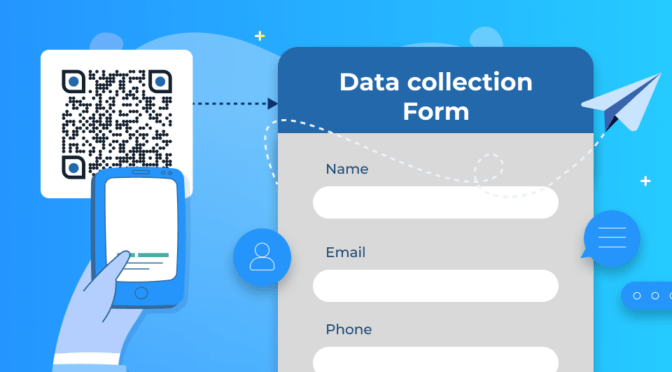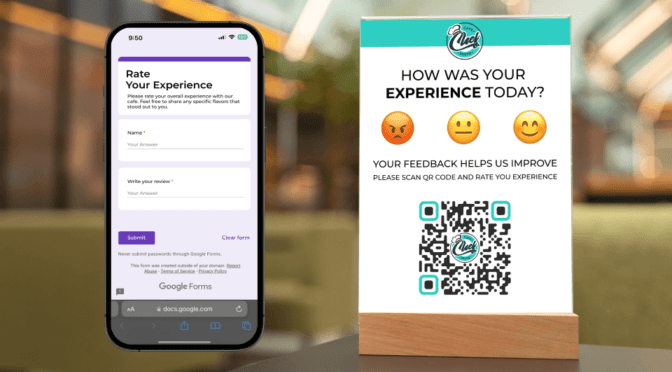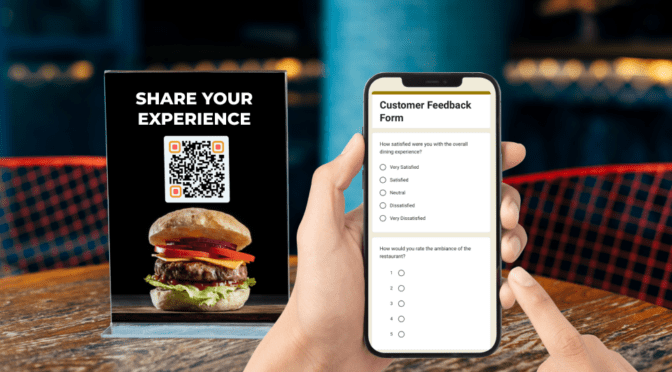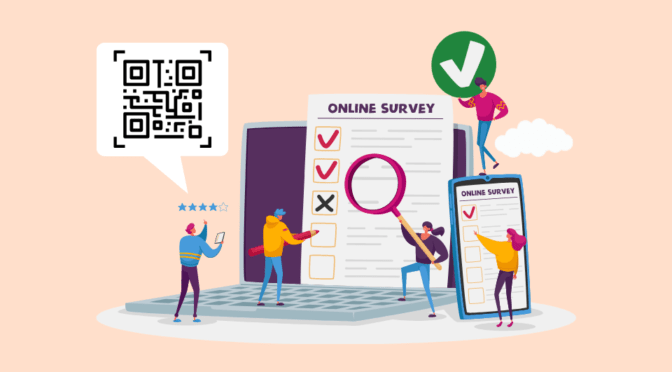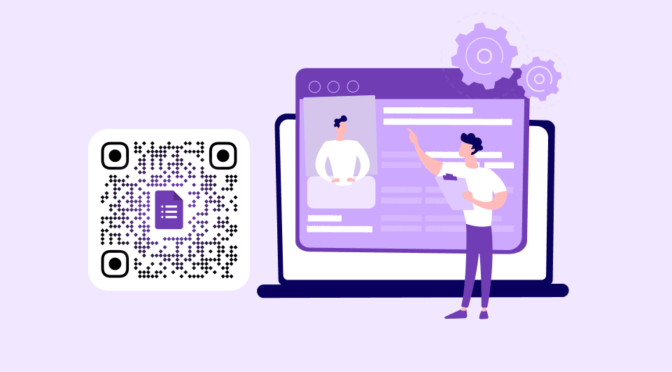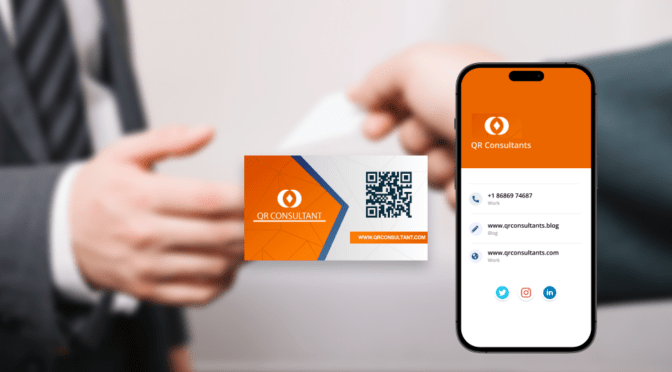Ever felt like your marketing is getting attention but not real action? That’s where lead generation becomes the game-changer. Without a steady stream of leads, your sales funnel dries up, no matter how great your product is.
But here’s the twist: lead generation is evolving rapidly, and businesses that stay ahead of the curve are reaping the rewards.
In 2025, the top trends driving lead generation include connected experiences, where every touchpoint, online or offline, seamlessly leads the customer to the next step. AI-driven automation also plays a significant role, allowing businesses to capture, nurture, and qualify leads faster.
Based on these trends, we’ve crafted this comprehensive lead generation guide to help you leverage the latest strategies and turn interest into loyal customers.
Table of contents
- What is lead generation? (+4 Types of leads to prioritize)
- How does lead generation help businesses?
- How to choose the best lead generation channel: Online vs. Offline
- Toolkit for lead generation
- Best practices for effective lead generation
- Capture offline leads like a pro with Uniqode
- Frequently asked questions
What is lead generation? (+ 4 Types of leads to prioritize)
Lead generation attracts and converts strangers into potential customers who show genuine interest in your product or service. It’s the critical first step in the customer journey, where curiosity meets opportunity. If done right, lead generation sets the stage for deeper engagement and long-term relationships.
But not all leads are the same. And that’s a big deal. Why? Your lead generation strategy should adapt based on who you’re trying to attract and how close they are to making a buying decision.
Understanding the different types of leads helps you tailor your strategy, making your efforts way more effective and your results much better.
💡Pro tip: Before building a new lead generation strategy, businesses should analyze the current breakdown of leads they’re getting. For example, did most leads land on your business after a Google search or an interaction at a tech event?
Understanding where your leads are coming from and which types are converting will help you fine-tune your approach for better results.
Types of leads that your business needs to prioritize
Before you can convert, you need to understand who you’re converting. Leads come in different forms based on their level of interest and engagement:
- Marketing Qualified Leads (MQLs): These folks have engaged with your brand. They might have downloaded an ebook, shown interest in a webinar, or subscribed to your newsletter.
- Sales Qualified Leads (SQLs): These are further down the path, having shown intent, such as requesting a demo or pricing details.
- Product Qualified Leads (PQLs): These leads have tried your product (think free trial users) and are more likely to convert.
- Service Qualified Leads: Current users want to upgrade or expand their relationship with your brand. They might be willing to expand their tech stack or adopt your other product offerings.
Inside the lead generation framework: How it works and why it matters
At its core, lead generation is about three key stages: building interest, capturing leads, and nurturing them into customers. Here’s a step-by-step breakdown of how the lead generation process typically works:
1. Define your ideal customer profile (ICP)
Before attracting the right leads, you need to know who you’re targeting.
Your ICP describes your business’s “perfect-fit” customer, the people most likely to find value in what you offer. Think about:
- Demographics: Age, location, industry
- Behaviors: Buying habits, challenges faced
- Needs: Solutions they’re actively looking for
The better you define your ICP, the more precise and effective your lead generation strategy will be.
2. Research and understand your audience
Once you have a rough profile, dive deeper.
Study your audience’s behavior where they spend their time online, what content they consume, what problems they are trying to solve, and how they prefer to interact with brands.
Good lead generation starts with empathy: truly understanding what your prospects care about.
3. Choose the right lead generation channels
Not every channel will suit every business.
Select your channels based on where your audience is most active. Some examples include:
- SEO and blogs for search-driven audiences
- Social media platforms such as LinkedIn, Instagram, or Facebook
- Webinars, podcasts, or online events
- In-person events, trade shows, or community meetups
- Partnerships and affiliate marketing
Your channel choice shapes the content and campaigns you’ll need to create.
4. Create valuable lead magnets
A lead magnet is an irresistible offer that provides value in exchange for a prospect’s information (Email ID, phone numbers, etc.). Examples include:
- Free ebooks
- Practical checklists
- Webinars/ Workshops
- Free trials
- Discount codes
A strong lead magnet solves a specific problem for your audience and leaves them wanting more from your brand.
5. Capture and quality leads
Once a prospect engages with your lead magnet, you cap ture their information through forms, sign-up pages, or gated content.
But not all leads are equal. Use lead scoring systems or qualification frameworks (such as BANT: Budget, Authority, Need, Timing) to prioritize leads based on their conversion likelihood. Tools like Salesgenie make this process easier by giving businesses access to targeted lead lists, detailed customer data, and filtering options. Instead of chasing unqualified prospects, you can focus on high-potential leads from the start, saving time and improving conversion rates.
Smart qualification saves your sales and marketing team’s time and boosts conversion rates.
6. Nurture leads through the funnel
Captured leads usually aren’t ready to buy right away.
That’s where nurturing comes in. You build trust and deepen engagement through personalized email sequences, targeted content, case studies, free consultations, or product demos.
The goal is to educate, answer objections, and stay top-of-mind until they’re ready to decide.
7. Hand over to sales (or convert directly)
Once a lead shows enough interest or meets your qualification criteria, it’s time to act.
Depending on your business model:
Marketing may hand the lead off to the sales team for a direct conversation.
In B2C or ecommerce models, the nurturing flow may drive a self-service checkout or trial upgrade.
Speed matters here. The quicker the follow-up, the higher the chances of closing.
8. Analyze and optimize the process
Lead generation isn’t a “set it and forget it” system. Regularly track metrics like:
- Lead quality
- Conversion rates
- Channel performance
- Cost per lead (CPL)
Understanding how lead generation works is just the beginning. Next, let’s explore why mastering this process is so vital for the success and growth of your business.
How does lead generation help businesses?

Lead generation keeps your sales pipeline full, your marketing strategy sharp, and your business growing. But beyond just “getting more leads,” lead generation offers significant long-term advantages for your brand.
1. Drive revenue growth
More leads = more chances to close deals.
When you consistently attract high-quality leads, you give your sales team more opportunities to convert, directly fueling revenue. Staying current with lead gen strategies ensures you reach the right people at the right time with the right message.
2. Boost brand visibility
Every interaction, whether a click on your ad or a visit to your blog, builds brand recognition. With lead generation, you’re bringing your products in the limelight while creating familiarity and trust.
The more people see your brand pop up in their feed or inbox, the more likely they will consider you when it’s time to buy. To sustain discoverability in longer B2B cycles, many teams pair this with specialized SEO support for B2B pipelines. It helps align search intent with buyer committees without changing your core messaging.
3. Target the right audience
Not every lead is worth chasing. Effective lead generation helps you zero in on the ones who are most likely to convert. This means you’re not wasting time on cold prospects, you’re focusing your energy where it counts.
4. Maximize marketing ROI
Lead generation gives you data, and with data comes smarter decisions. By tracking which campaigns drive the most leads, you can double down on what works and cut what doesn’t.
For example, imagine if a fitness app brand sees higher conversions from email marketing than influencer campaigns. They can pivot budgets accordingly and get more value from every dollar spent.
5. Lower Customer Acquisition Costs (CAC)
When you consistently attract qualified leads, your sales and marketing teams work more efficiently, and that means spending less to acquire each customer.
For example, a SaaS brand offering CRM software might focus on low-cost strategies like SEO and email marketing, which bring in a steady stream of leads without breaking the bank.
Once you grasp the importance of lead generation, the next step is choosing the right approach. Should you focus online, offline, or a smart mix of both? Let’s dive into the options.
How to choose the best lead generation channel: Online vs. Offline
Most lead-generation advice focuses disproportionately on online channels. However, a vast lead opportunity remains offline.
Studies find that offline leads convert faster than online leads: 40% of offline leads become customers, compared to 18% online. Here’s a table that compares both channels to understand them better.
Which lead generation channel is right for you?
First, let’s look at some basic criteria you need to evaluate before deciding on a lead generation channel
Industry fit
Some industries naturally lean toward one channel over the other.
- Online-first industries like Software-as-a-Service (SaaS), ecommerce, and digital services thrive with performance-driven, scalable campaigns. Online channels are ideal when your product can be researched and purchased digitally.
- Offline-reliant industries such as real estate, manufacturing, and healthcare often benefit from in-person interactions that build trust and allow for product demos or consultations.
Budget constraints
- Online lead generation is often more affordable to start. With a modest budget, you can run ads, publish content, or use email tools with measurable results.
- Offline strategies usually require larger upfront investments, travel, booths, print materials, and staffing, but can yield deeper, high-value relationships.
Target market depth
- If you’re targeting broad or global audiences, online channels win on reach and targeting precision.
- If you’re working in a niche or local market, offline can help you connect personally, especially where relationships drive decision-making, and complement your efforts with a local citations service to boost online visibility in targeted regions.
Speed vs. trust
- Need leads fast? Online campaigns (ads, landing pages, email) can launch in hours and scale quickly.
- Do you need to build credibility? Offline efforts like seminars, networking, or field visits might take longer, but they’re great for trust-heavy sales.
Tracking and optimization
- Online campaigns offer real-time data and performance metrics; you can tweak creatives, audiences, and messaging on the fly.
- Offline campaigns require manual tracking and often don’t offer the same granularity unless paired with digital tools (QR codes, surveys, CRM integration).
| Category | Online lead generation | Offline lead generation |
| Definition | The process of attracting and converting prospects through digital channels such as websites, social media, email, and ads, powered by data, automation, and real-time tracking. | The process of generating leads through in-person or physical methods, such as events, trade shows, print media, or referrals, focuses on personal connection and relationship building. |
| Target audience reach | Global or highly targeted using interests, behavior, and demographics. | Local or regional, based on event or physical location. |
| Cost efficiency | Cost-effective with digital tools like email, ads, and social media. | Higher costs due to print materials, venues, and staffing. |
| Lead qualification | Automated via CRMs, analytics, and behavior tracking. | Manual—through face-to-face chats, calls, or paper forms. |
| Personalization | Highly personalized with tailored emails, ads, and content. | Limited; relies on direct interaction to personalize. |
| Scalability | Easily scalable with minimal extra effort or budget. | Limited, scaling often means more manual work and costs. |
| Data collection | Effortless via digital forms and website activity; integrates with CRM tools. | Manual—through forms, business cards, or post-event entry. |
| Flexibility and adaptability | Easy to tweak campaigns in real-time using data insights and A/B testing. | Less flexible—requires more time and resources to make changes (e.g., reprinting materials). |
Top 3 offline lead generation methods (with examples)
Here are the top 3 ways to generate leads offline:
- Networking at industry events
In-person events are goldmines for lead generation. Face-to-face interactions build trust faster and offer a unique chance to connect with decision-makers directly. According to research, in-person meetings have a 40% close rate, and nearly half turn into actual business.
🚀 How to Get Started:
- Pick events relevant to your niche (e.g., SaaS summits for tech founders).
- Perfect your elevator pitch- short, sharp, and benefit-driven.
- Use digital business cards to exchange and store contacts instantly.
- Follow up within 24 hours referencing your conversation to keep the connection warm.
💡Example:A real estate agent at a property expo can connect with both buyers and developers, get real-time insights, and generate highly qualified leads simply by starting conversations and exchanging digital business cards.
🏆 Key Benefits:
- Build authentic relationships with prospects and industry peers.
- Spot warm leads and collect contact info on the spot.
2. Direct mail campaigns
Direct mail cuts through the digital noise with something physical. When done right, it’s hyper-targeted, memorable, and surprisingly effective, generating up to 6x more revenue than online channels.
🚀 How to get started:
- Validate your mailing list to avoid waste.
- Define your audience and tailor the message to their needs.
- Add a time-limited offer to create urgency.
- Include a QR Code linking to a landing page or signup form.
- Use bold design and a clear CTA.
- Use an optimized email signature linked to your digital business card
💡Example:A university sends brochures with QR Codes to high school seniors showcasing scholarships, campus life, and programs, driving visits to an application landing page.
🏆 Key benefits:
- Easily track response rates using QR Codes or custom landing pages.
- Reach specific households or demographics with tailored messaging.
- Physical mail stands out and boosts brand recall.
3. Cold calling
Cold calling is direct outreach via phone to potential leads. With a 75% chance of getting a response on the first try, it’s still a fast and effective lead-gen method if you know your audience and respect their time.
🚀 How to get started:
- Prepare a short, personalized script with your value prop.
- Build a list of qualified leads using CRM tools.
- Call during ideal hours (mid-mornings or late afternoons).
- Use a CRM to track calls and automate follow-ups.
- Be persistent, but not pushy. Respect declines, and always follow up with value.
💡Example:A B2B SaaS sales rep targets HR heads in mid-sized firms. By researching their hiring challenges, they tailor a pitch on how their software reduces recruitment time, securing a product demo on the spot.
🏆 Key benefits:
- Personalize your pitch in real-time based on reactions.
- Talk directly to decision-makers and get instant feedback.
Top 5 online lead generation methods (with examples)
Online lead generation attracts potential customers to your business through digital channels like websites, search engines, social media, and email marketing. With this approach, you can reach a wider audience and generate leads.
Online lead generation is suitable for businesses of all sizes and industries. It is particularly suitable for those with websites or social media profiles.
Here are the top 5 ways to generate leads online:
1. Content marketing
Content marketing attracts leads by creating valuable, relevant content that solves your audience’s problems. Think blogs, guides, videos, or case studies that answer their burning questions.
🚀 How to get started:
- Identify your audience and their pain points.
- Create helpful content aligned with those needs.
- Distribute via SEO, email, and social media.
- Use lead magnets (e.g., gated ebooks, checklists) to collect emails.
- Track engagement and optimize content based on performance.
💡Example:A law firm publishes a blog titled “Understanding Legal Implications of Remote Work.” It ranks for relevant keywords and attracts business owners searching for legal advice, bringing in warm, informed leads.
🏆 Key benefits:
- Build trust and position yourself as an expert.
- Improve SEO and organic visibility.
2. Search Engine Optimization (SEO)
SEO helps your site rank on Google for search terms your audience is actively typing in. The higher your rank, the more visibility, traffic, and leads you’ll get.
🚀 How to get started:
- Identify high-volume, low-difficulty keywords using tools like Semrush.
- Optimize content with clear headings, internal links, and fast loading times.
- Build backlinks and improve domain authority.
- Focus on local SEO (e.g., Google Business Profile) if relevant.
- Track rankings and adjust as search trends evolve.
💡Example: A real estate agency optimizes its blog for “best neighborhoods in Mumbai.” With consistent traffic and CTAs on the page, they generate high-intent buyer leads passively.
🏆 Key benefits:
- Free, recurring traffic without paying for clicks.
- Long-term impact, even after campaigns end.
3. Pay-Per-Click (PPC) Advertising
PPC ads put your business at the top of search engines and social platforms. You pay only when someone clicks, which is ideal for targeting specific queries or audiences.
🚀 How to get started:
- Define your goal and audience.
- Use Google Keyword Planner or Meta Ads Manager for targeting.
- Drive traffic to high-converting landing pages.
- Analyze and refine based on ROAS and click data.
💡Example:An online retailer selling designer bags targets “luxury handbags under $500” with Google Ads. The result? A spike in traffic from people ready to buy.
🏆 Key benefits:
- Highly measurable and data-rich.
- Immediate visibility and traffic.
4. Email marketing
Email marketing builds relationships by delivering valuable, personalized content straight to your audience’s inbox, keeping your brand top-of-mind.
🚀 How to get started:
- Build an opt-in email list via forms, events, or downloads.
- Segment your list by interest or behavior.
- Send regular, helpful emails with clear CTAs.
- A/B test subject lines, layouts, and content.
- Monitor open, click, and conversion rates to improve.
💡Example:A financial advisor sends a monthly newsletter with tax tips and market insights. When prospects are ready to invest, they already trust and know who to call.
🏆 Key benefits:
- Easy to personalize and automate.
- Great for nurturing leads over time.
5. Webinars and virtual events
Webinars let you engage directly with your audience, share knowledge, and subtly pitch your product, all while collecting lead data.
🚀 How to get started:
- Choose a topic that solves a real pain point.
- Promote through email, social media, and ads.
- Collect attendee info during registration.
- Use a corporate virtual background to ensure a professional outlook
- Follow up post-event with resources or a consultation offer.
- Track leads and move them into your sales funnel.
💡Example:A legal firm hosts a webinar on “Estate Planning Essentials.” Attendees get useful tips, and the firm gets a list of prospects interested in long-term financial planning.
🏆 Key benefits:
- Showcase expertise and build authority.
- Interact with potential customers in real time.
Having a strategy is great, but execution matters just as much. To make your lead generation plan truly effective, you’ll need the right tools at every stage of the funnel.
Toolkit for lead generation
A successful lead generation strategy isn’t just about tactics. It’s also about having the right tools at every process stage.
Here’s a breakdown of tools mapped against the different stages of the lead generation funnel for better clarity.
Stage 1: Awareness (attract and capture attention)
- QR Code Generators: Uniqode, QRCode Monkey
(Bridge offline to online, drive website traffic) - Content Management Systems: WordPress, Webflow, Ghost
(Publish SEO-rich blogs and landing pages) - Social media management tools: Hootsuite, Buffer, Later
(Consistent posting and audience engagement) - Design tools: Canva, Figma, Adobe Express
(Create attractive, lead-attracting content)
Stage 2: Interest and lead capture
- Lead capture automation tools: OptinMonster, Drift, Intercom
(Collect contact info via popups, chatbots, forms) - Digital business cards: Uniqode digital business cards, HiHello, Blinq
(Network and capture prospect info in real-time) - Email marketing platforms: Mailchimp, ConvertKit, Brevo
(Capture email addresses and start nurturing sequences)
Stage 3: Consideration and nurturing
- CRM platforms: HubSpot CRM, Salesforce, Zoho CRM
(Track, score, and manage leads) - Marketing automation platforms: ActiveCampaign, HubSpot, Marketo
(Automate nurturing workflows, personalized drip campaigns) - Content Management Systems: WordPress, Webflow
(Create gated content, case studies, and nurturing assets)
Stage 4: Conversion
- CRM platforms: HubSpot CRM, Salesforce, Zoho CRM
(Enable smooth sales handoffs and close deals) - Marketing automation platforms: HubSpot, ActiveCampaign
(Trigger final conversion nudges, like demo scheduling or free trial upgrades) - Design tools: Canva, Figma, Adobe Express
(Create high-converting landing pages, proposal decks, and sales materials)
Stage 5: Post-conversion analysis and optimization
- Analytics tools: Google Analytics, Hotjar, Mixpanel
(Measure funnel performance, track user journeys, identify bottlenecks)
Equipped with strategies and tools, you’re almost ready to go. Before you launch, make sure you follow these best practices to maximize your lead generation success and avoid common pitfalls.
Best practices for effective lead generation
1. Optimize for mobile
A significant portion of users accessing websites via mobile devices, ensuring a seamless mobile experience is crucial for capturing leads.
Credo Mobile revamped its email landing page for mobile users, resulting in an 84% increase in conversion rates.
How to do it right?
- Use responsive design on landing pages and forms.
- Compress images and avoid long blocks of text.
- Test your lead forms on various mobile devices.
2. Use clear CTAs
A strong Call-to-Action (CTA) isn’t just a button. It’s your silent salesperson. Verbs like “Download,” “Start Free Trial,” or “Get My Quote” are proactive, making it easier for users to take that next step.
Dropbox proved just how powerful a well-crafted CTA can be. In a test between “Start saving files” and the simpler “Sign up for free,” the latter boosted signups by 10%.
How to do it right?
- Use action verbs like “Download,” “Start Free Trial,” or “Get My Quote.”
- Make your CTA buttons stand out with contrasting colors.
- Keep only one primary CTA per page or screen.
3. Track and analyze
If you’re not measuring your lead generation efforts, you’re essentially flying blind. Without data, there’s no way to know what’s working or what’s wasting your time and budget. Analytics tools can help you dig even deeper, revealing user behavior, source attribution, and conversion paths so you can tweak your campaigns based on real insights.
Just ask SalesTrip, they used Leadfeeder to monitor website visitor activity and saw a 10% bump in lead conversion rates. That’s the power of data-driven decision-making in action.
How to do it right?
- Set up conversion tracking on forms and lead magnets.
- Use UTM links to identify high-performing channels.
- Monitor metrics like cost per lead (CPL), conversion rate, and bounce rate.
4. Focus on quantity over quality
When it comes to lead generation, quality always trumps quantity. A single highly qualified lead is far more valuable than a hundred who never convert. That’s why prioritizing lead quality is essential for smarter use of your time and resources. Implementing a lead scoring system can help you zero in on the prospects most likely to buy.
Let’s take the case of UserMotion. They fine-tuned their lead qualification approach and saw an impressive 83% jump in conversions from qualified leads. That’s the kind of payoff you get when quality leads the way.
How to do it right?
- Use qualifying questions on forms (“What’s your budget range?”).
- Run targeted campaigns focused on your ideal customer profile (ICP).
- Score leads based on behavior and readiness to buy.
5. Conduct A/B tests
Testing different elements of your lead generation process helps you refine your approach and maximize results. By comparing two variations (A and B) of your campaigns, you can identify which strategies, copy, design, or calls-to-action resonate best with your audience.
How to do it right?
- Hire a freelancer or agency with experience in your industry.
- Ensure they have a track record of improving lead quality and cost-efficiency.
- Set KPIs like CPL, lead quality score, or conversion rate.
Bonus: You can also keep reading our blogs for more such helpful content 😉
Now that you have a strong foundation in lead generation tactics and best practices, here’s a smart next step you can take to combine both offline and online efforts seamlessly.
Capture offline leads like a pro with Uniqode!
There you go, you’ve had a mini crash course on the basics of lead generation.
If you’re just getting started, we suggest using the less expensive lead generation strategies, such as content marketing, newsletters, organic social media, and SEO.
For offline channels, we recommend using Uniqode for QR Codes and digital business cards to capture demand from the physical world and transport it into your digital world.
As your business grows and you get used to things, you can incorporate other strategies and experiment to see if they work for you. The idea is to have more than one lead generation strategy.
Invest in a good CRM, hire better talent, and give your best until you land the lead generation strategy that works for you.

Frequently asked questions
1. How can I measure the effectiveness of my lead generation efforts?
To measure the success of your lead generation strategy, track key performance indicators (KPIs) such as website traffic, conversion rates, cost per lead (CPL), and customer acquisition cost (CAC). Use tools like Google Analytics, CRM dashboards, and marketing automation platforms to monitor performance and identify which channels or campaigns drive the highest-quality leads. Regularly analyzing these metrics helps you optimize efforts and maximize ROI.
2. How can I use social media for lead generation?
Social media can be a powerful tool for lead generation when used strategically. Start by creating engaging, value-driven content that resonates with your target audience. Use targeted paid ads to reach specific demographics, and participate in industry-specific groups or communities to build relationships and establish authority. Platforms like LinkedIn, Instagram, and Facebook offer lead generation forms and advanced targeting features that help convert followers into leads.
3. What are some common mistakes to avoid in lead generation?
Avoiding common lead generation pitfalls can significantly improve your results. Key mistakes include targeting the wrong audience, which leads to unqualified leads; producing low-quality or irrelevant content that doesn’t address buyer needs; and failing to measure or analyze campaign performance, which prevents optimization. Additionally, neglecting lead nurturing and relying too heavily on one channel can limit your success.
4. What are some tips for creating high-quality content for lead generation?
To create content that drives leads, focus on providing value and solving real problems for your audience. Make your content informative, relevant, and easy to consume. Use SEO best practices, including keyword optimization, to boost visibility on search engines. Include clear calls to action (CTAs), and promote your content across email, social media, and relevant third-party platforms to maximize reach. Regularly update and repurpose your best-performing content to maintain engagement.
Sukanya is a Content Marketer at Uniqode and a former journalist who fuses newsroom curiosity with SEO-savvy storytelling to help brands grow online. She’s on a mission to demystify digital business cards, digging deep into data, trends, and user behavior to spotlight how they transform how we network and generate leads. Her content doesn’t just inform—it equips. Outside the digital realm, she’s either rescuing animals, getting lost in a plot twist, whipping up kitchen experiments, or chasing stories worth telling.
Related Posts
14 day free trial of the QR platform







